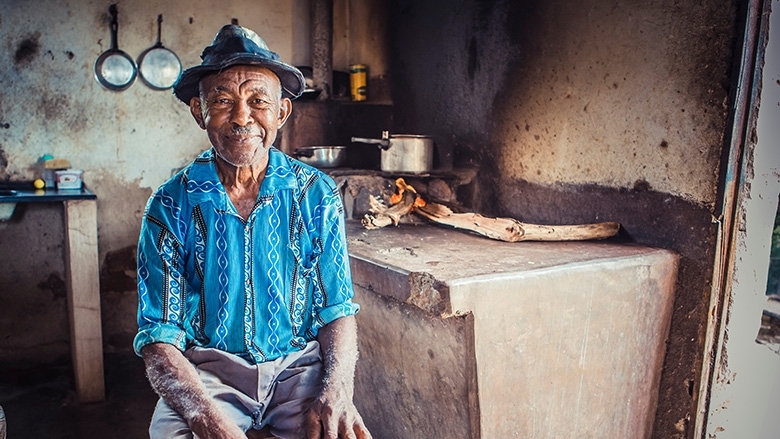The world is aging and becoming increasingly urban. For the first time, there are more older persons than children under five, and unprecedented challenges, from extreme weather events to continued conflict and violence are driving more people to cities for livelihoods, to be closer to family, have access to essential services and simply to enjoy their golden years. How can we ensure cities welcome and nurture a diverse population – older and younger persons alike - in ways that are sustainable, inclusive, and equitable for all?
This report, Silver Hues: Building Age-Ready Cities, suggests that proactively thinking about and investing intentionally in planning and designing cities can aid their transformation toward age-readiness, and that a good starting point for cities and towns to make progress toward age-readiness is to focus on the following areas:
- Universal design: A city built with universal design in mind provides user experience solutions for residents of all ages and abilities, but in particular for those with mobility, cognitive, hearing, or vision challenges. The report suggests that a good example of thoughtful, universal design is planning building codes and regulations and encouraging their application not only when new buildings are constructed and public spaces are built, but when existing ones are retrofitted or improved.
- Housing solutions: Homes must help older persons to live independent, safe, and dignified lives. These spaces must be universally accessible; provide people with a range of transportation options; and be close to other essential services, such as healthcare, personal care, shopping and access to public and social facilities.
- Creating multigenerational spaces: Often, decision makers in families believe that older persons are safest in confined or isolated facilities. In fact, the reality is quite the opposite – older persons thrive when they have access to social settings and community facilities. Multigenerational settings, from creative housing solutions and recreational facilities, to public amenities, and community groups can facilitate greater interaction between generations, thus providing a better quality of life – for older and younger persons alike.
- Better transportation: Transportation is an essential aspect of everyone’s life—as it permits citizens to meet basic needs, work, socialize, and make use of public services. As cities grow older and larger, policy makers will need to intentionally prioritize accessibility and inclusion in transportation -- from clear signage and thoughtfully designed entrances, waiting areas and, walking paths, to good policies to set fares and transportation concessions for older persons.
- Technology: Technology has the power to improve the quality of life for older persons. This is a once-in-a-lifetime chance for innovators in the technology space to not only build solutions (from digital healthcare to apps and smartphones) that are age-friendly, but also to close existing gaps and assist caregivers and service providers who help older persons.
- Efficient spatial forms: Effective spatial planning allows resources and services to be concentrated rather than spread out, which facilitates accessibility, the provision of services, and optimizes land use. One example is the concept of “15-minute city,” which has in some ways been adopted by many cities across the world. The concept suggests that neighborhoods should be dense, mixed-use, and walkable, where everything residents need to do is within a 15-minute radius.
- Inclusion and progress toward age-readiness: Cities need to take lasting action to ensure that older persons have adequate opportunities to exercise agency. The issue of violence against, and ill-treatment of, older persons is a particularly serious challenge to overcome, since evidence indicates that these problems are pervasive and likely increasing, especially in light of the restrictions imposed by COVID-19.
Planning for an aging city makes both economic and social sense. It underscores that older persons are a diverse, growing demographic, whose members are active and productive members of their social and political environments. They are essential for the social fabric of society and have the power to pass on cultural and social history and heritage to younger generations.
The report acknowledges the unique role older persons play in society and underscores the need for policymakers to intentionally invest in the availability, affordability, and accessibility of infrastructure and services to make their cities age-ready.
Aging is a predictable reality. It should also be an enjoyable, healthy, and inclusive one. The World Bank aims to work with cities and countries to make age-readiness possible for all.
